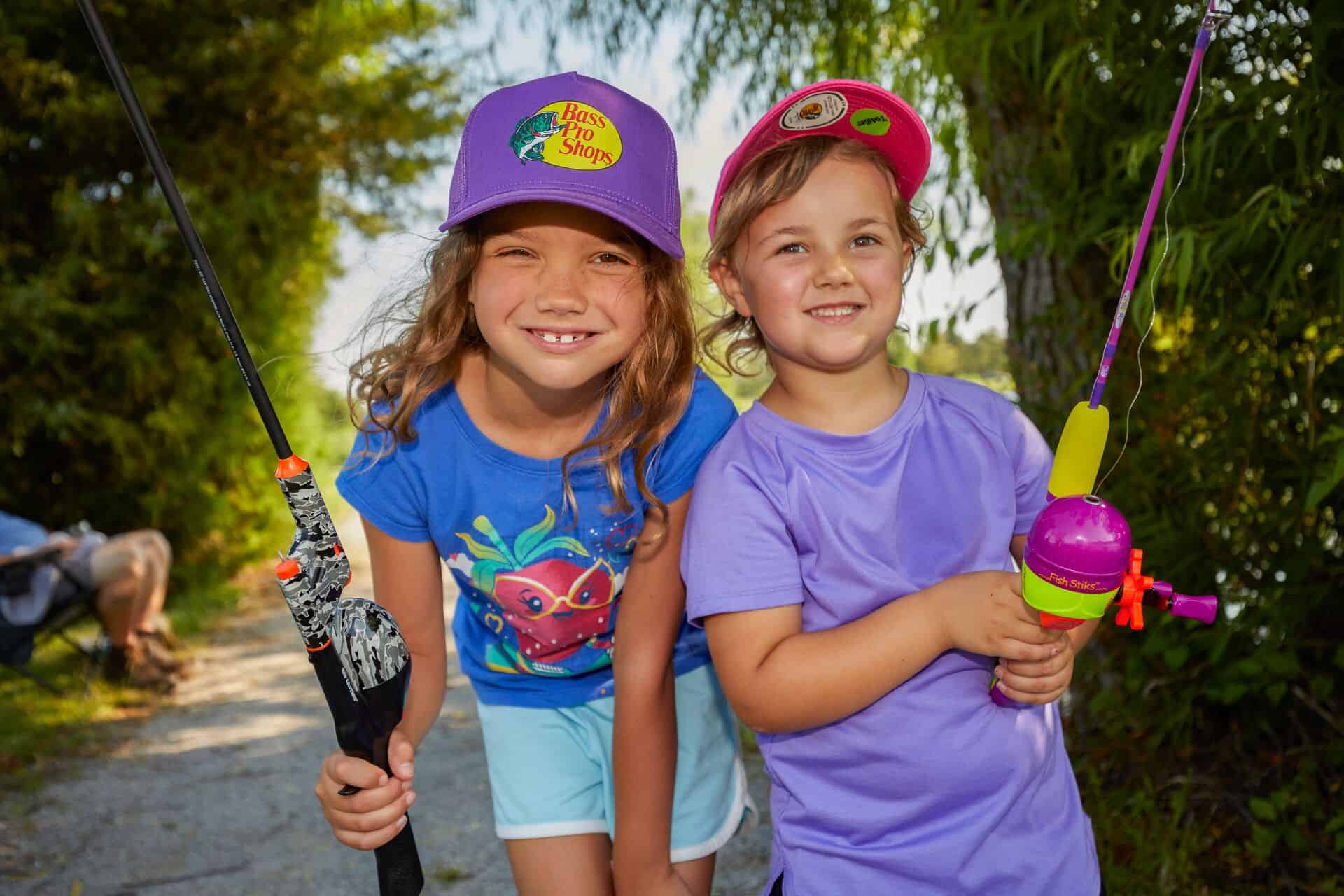
The National Fish Habitat Partnership: Good for lakes, fish, fishermen and the economy
In 2007, our nation’s system of reservoirs and lakes faced chronically deteriorating habitats and decreasing fish populations. In response, Johnny Morris, founder of Bass Pro Shops, launched what has grown to become the most comprehensive freshwater conservation program in the United States. This is the story of how the National Fish Habitat Partnership came to be.
National Fish Habitat Partnership

Co-initiated in 2007 by Johnny Morris and the US Army Corps of Engineers, the National Fish Habitat Partnership has enacted thousands of projects across all 50 states. Its results include significantly improved fish habitat, record breaking bass fishing tournaments and the generation of more than $1 billion in economic value. The partnership highlights the link between sound conservation, good fishing and job creation.
Why The US Army Corps of Engineers?
This partnership has been uniquely impactful to the nation’s freshwater fisheries. The US Army Corps of Engineers — because it is responsible for management of the reservoirs it created — hosts 33% of all freshwater fishing in the United States. Corps-managed waters host some 20,000 fishing tournaments each year. It should be no surprise then, that the US Army Corps of Engineers ranks as the largest federal providers of outdoor recreation in the United States.
Johnny Morris provided much of the vision, leadership and funding to get the project off of the ground. Morris’ role included spotlighting the need for a national fish habitat initiative and working to ensure that water levels were managed to maintain appropriate depth during times bass were bedding.
Johnny Morris then convened federal, state, and other conservation groups to talk about fish habitat. He also played a leading role in launching the initiative, providing $2.5 million in seed funding — a total matched by federal agencies. With the funding in place, Morris next hosted a group of state — the Missouri Department of Conservation and the Arkansas Department of Fish and Game — and federal officials at the Big Cedar Lodge to launch the pilot project on Table Rock Lake. To assist in deployment of the habitat structures, Tracker built a fleet of Habitat Barges for the project.
The National Fish Habitat Partnership was born.
About the National Fish Habitat Partnership
The Corps of Engineers manages approximately 500 reservoirs across the United States. The median age of these reservoirs is 60 years. When the rivers were first impounded, lakebeds were covered in timber and flooded structure. Over the years much of this submerged habitat degraded, leaving barren lakebeds lacking structure.
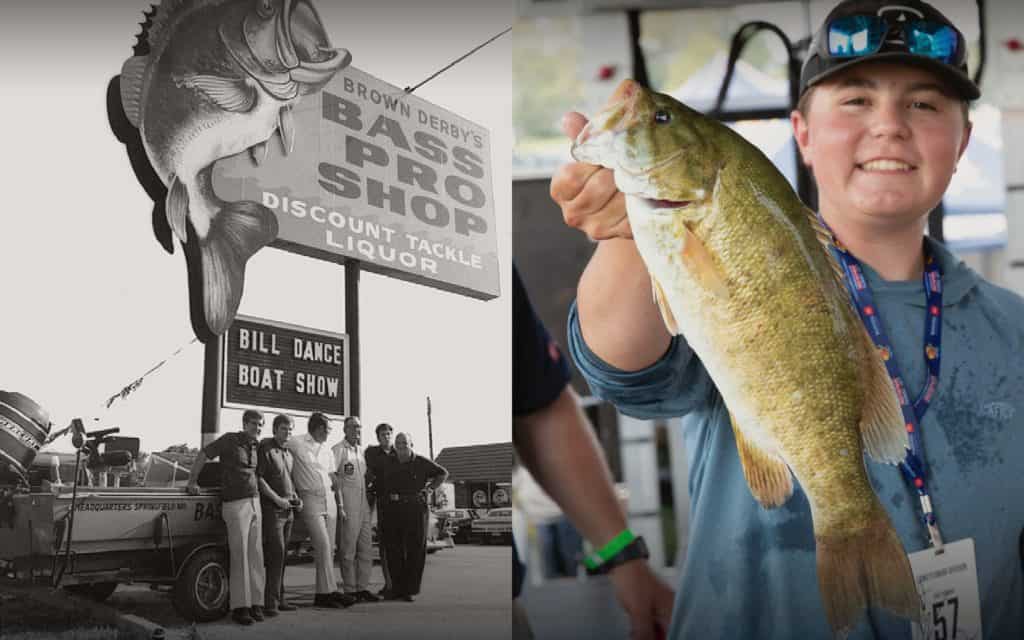
More Than A Tournament: The Story of the US Open
Submerged structure is important in a variety of contexts. It is not only good for fishing — it attracts gamefish and provides a focal point for anglers, but for fish populations as well. Adult gamefish use structure to ambush prey. Juveniles use structure for protection from predators. Without adequate habitat, the populations of freshwater fish species — including bass and crappie — decrease.
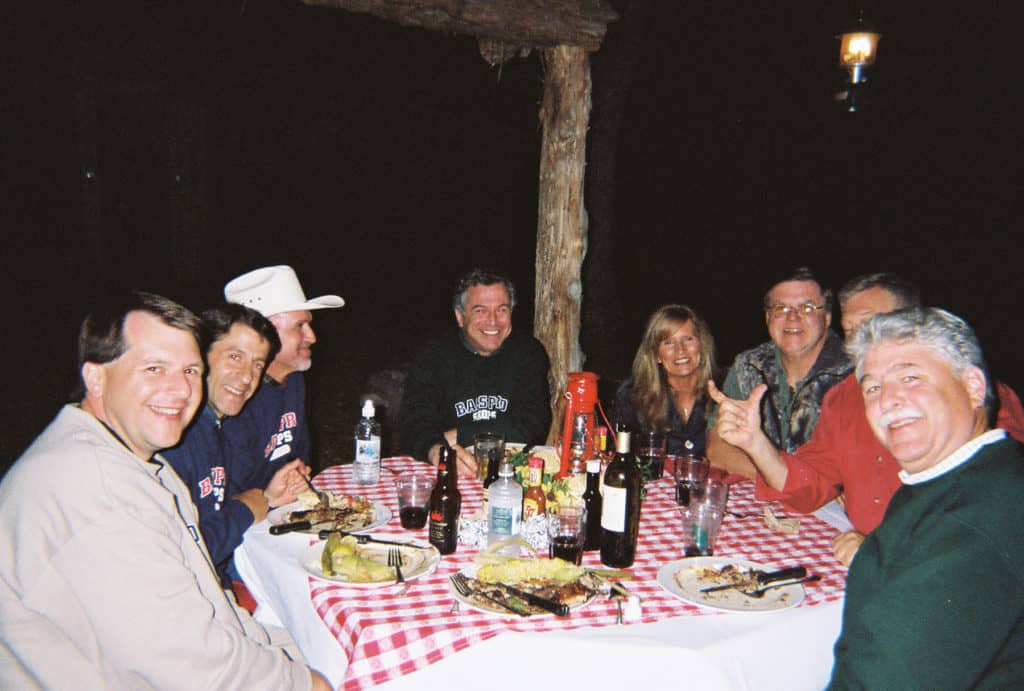
The project was kicked off on Table Rock. Its opening celebration was a fish fry that featured morel mushrooms that Morris gathered in the Ozarks.
Table Rock Lake: Proof of Concept
Working with state fish and wildlife agencies in Missouri and Arkansas, the Table Rock Lake project placed 2,100 mega structures across the lake — including, 1,893 brush piles; 104 rock structures; 76 stump fields; 26 rock fence structures; 11 stump/rock fields. Tracker Marine constructed a specialty-built fish habitat barge to deploy the structures.
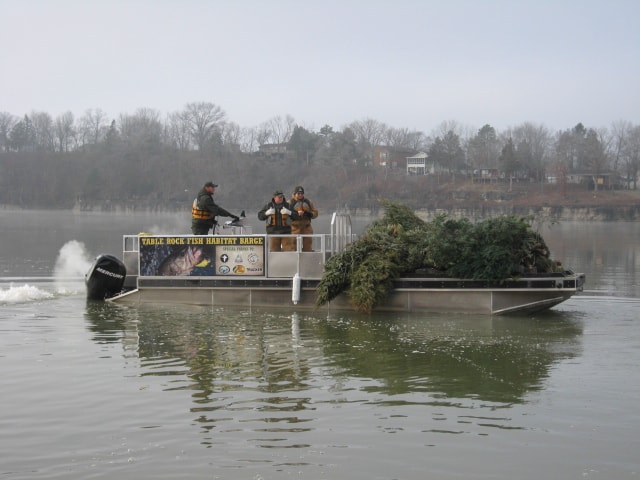
While Table Rock Lake has long been recognized as a top largemouth bass fishing destination, habitat improvement dramatically bettered fishing. In fact, the bass fishing on the lake has never been better. The Table Rock Lake campaign also included habitat research. By understanding which types of structure work best in different situations, the National Fish Habitat Partnership has created a national model for reservoir habitat management across the country.
Good for Conservation. Good for the Economy
Why is structure good for fish? The answer lies in how freshwater gamefish use their environment as they grow. Consider largemouth bass.

Largemouth spawn on beds and protect their eggs until they hatch. Once the larval bass emerge from eggs, they take cover in submerged structure and vegetation. In water bodies that lack habitat diversity, young bass and other fish do not have access to necessary shelter and are eaten by larger fish. The result is less juvenile survival and decreasing populations through time.
Adding physical structure, on the other hand, increases juvenile survival rates. Fish populations then grow and fishing opportunities improve. In fact, investment in habitat improvement produces compounding benefits through time.
Submerged shelter gives juvenile bass a better chance to survive to maturity. More adult bass then produce more juvenile bass. These juveniles are hatched into an environment that gives them a better chance of survival. The cycle continues and what was once a lake with depleted habitat and decreasing fish populations is a revitalized system with increasing fish stocks.
To date the National Fish Habitat Initiative has restored tens of thousands of acres within freshwater impoundments and more than 2,000 miles of river. It is a great example of public-private partnership between the federal and state agencies, non-governmental organizations and industry partners. Habitat improvements have generated an economic value of more than $1 billion and support 20,000 American jobs. The return on investment to date has been 18:1.
Cascading Benefits of Freshwater Habitat Improvement
How does dropping rock beds and stump fields into lakes create jobs? The answer lies in how America relates to the great outdoors. Lakes — and the fishing opportunities they present — are the focal point of many communities. In fact, recreational fishing activity supports thousands of jobs across America.
When a lake’s habitat is improved, the fishing gets better. After several years of “more bass spawning more bass,” an improved lake’s fishing can be better than surrounding waterbodies.
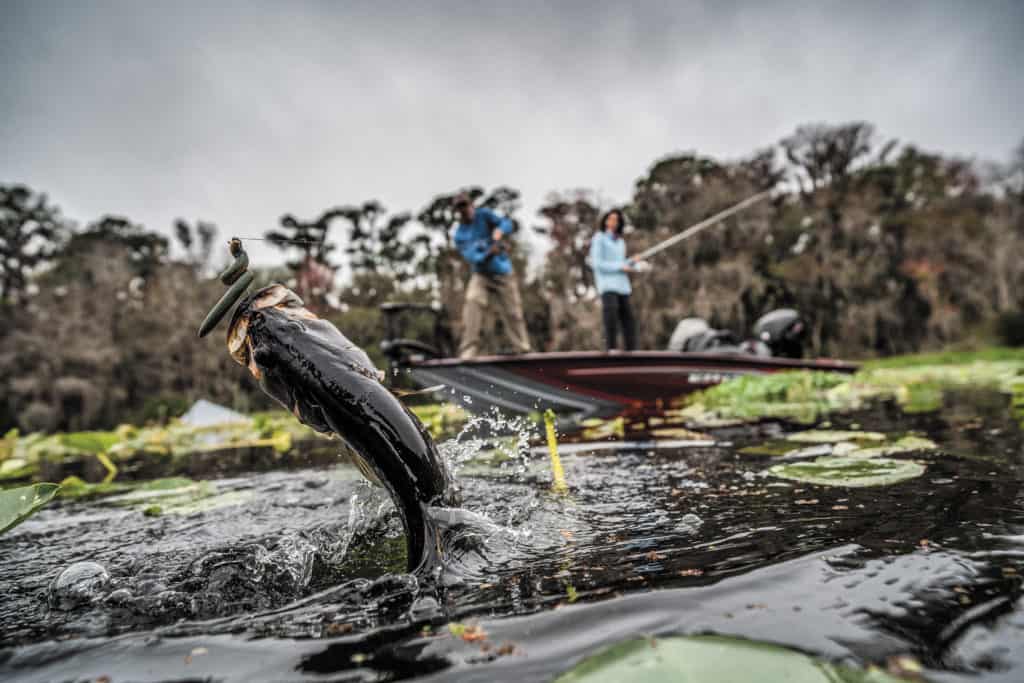
Reports of consistently good fishing attract travelling anglers. Recreational fishing tourists not only spend money with marinas, but stay at hotels, purchase fuel and support restaurants. In places that heavily benefit from tourism revenue — like communities surrounding Table Rock Lake — National Fish Habitat Partnership projects could well be considered investments in economic development. Better habitat for bass can lead the way for better habitats for people.
The National Fish Habitat Partnership started with an idea from Johnny Morris. Building into a partnership with federal and state agencies, it has grown into what is currently the largest freshwater conservation in the United States. Americans will be enjoying its benefit for years to come.



